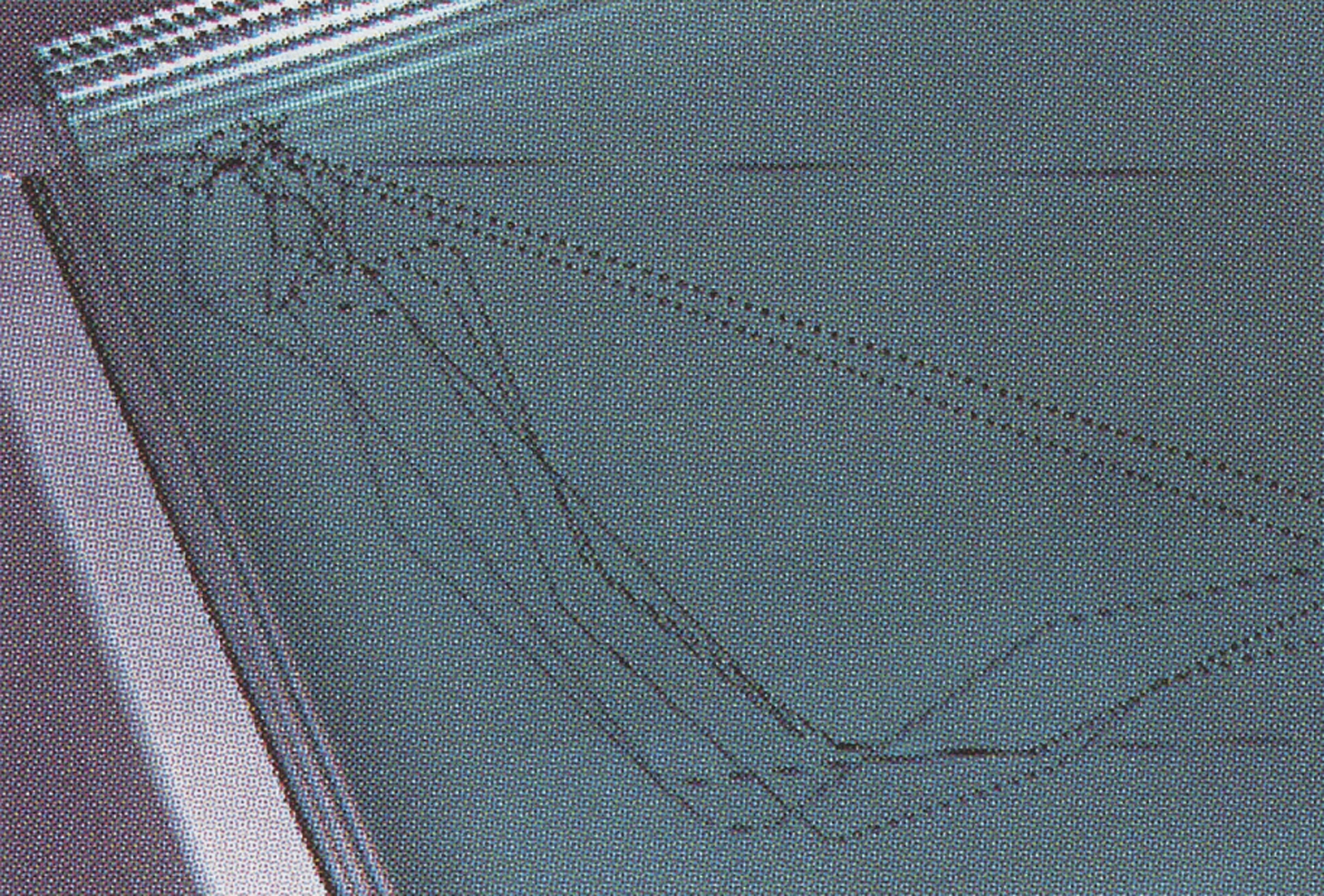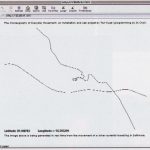Teri Rueb: The Choreography of Everyday Movement (drawing stack)
Artist(s):
Title:
- The Choreography of Everyday Movement (drawing stack)
Exhibition:
Creation Year:
- 2002
Medium:
- glass, aluminum, inkjet prints on acetate
Size:
- 21 x 26 x 9 inches
Category:
Keywords:
Artist Statement:
The Choreography of Everyday Movement envisions as a topographical mapping the culturally inscribed nature of our everyday travels. Using global positioning satellite (GPS) receivers, the project seeks to render visible our movement through the built environment of the city, revealing sociopolitical and poetic patterns of traffic flow through the urban body. In these drawings we see images as often as we detect the variations of a traveler’s movement through the city over time. The GPS, designed for precise measurement and navigation, is subverted and recast as a kind of giant pencil or tool for making chance compositions.
The project takes process and performance as the subject of the work. Artist, studio assistant, and traveler are all equal performers in this process-based work that explores the performance of our everyday lives.
The relationship of performer/spectator is reconfigured in the live Internet performance in which the performer is only visible as an ant-like dot crawling across the screen. The performer is insulated from the gaze of the spectator, creating a shifted and mediated economy of the gaze that stands in contrast to traditional live performance, film, or video.
The Choreography of Everyday Movement reduces the representation of movement and physical presence to the most basic visual abstraction in an attempt to privilege the poetic over the indexical.
Affiliation Where Artwork Was Created:
- University of Maryland
Other Information:
PROJECT PROPOSAL
Process and performance are articulated as live and archived elements in the exhibition. As a live element, a participant is tracked by GPS as she moves about the city. The trail of the participant’s movement is transposed into visual terms as a dynamic drawing generated in real time over the Internet and presented as a projection in the installation space.
As an archived element, the drawings are recorded and presented for viewing in a 3D format. Recorded journeys are prepared as vector-based drawings in Adobe Illustrator that are then printed on transparency film. Each printed journey is registered against prior journeys, and sandwiched between half-inch plates of glass. The stacks of glass grow taller over time with the addition of subsequent drawings, thus creating an expanding “z-axis” through which the viewer can observe changes in the traveler’s movement over time.
Artist and studio assistant maintain the installation throughout the period of the exhibition by monitoring and recording each live Internet performance, translating drawings from performances into acetate prints, and integrating the prints into the glass stacks. Process and performance are blurred as the artist, present as part of the exhibition, creates the stacks of archived drawings from the participant’s movement as she travels about the city.
The piece uses GPS receivers interfaced with laptop computers. Geographical data from the GPS units is passed wirelessly via cellular modem to a Java applet running on a server on the Internet. The Java applet translates geographical data into a drawing that is generated in real time as the performer moves about the city. Java applet and wireless integration were realized by In Choi. The project is documented on the Web at www.research.umbc.edu/-rueb/trackings/
Images:
1: Real-time global positioning satellite tracking of a driver traveling around the city; Java applet running in Web browser.







